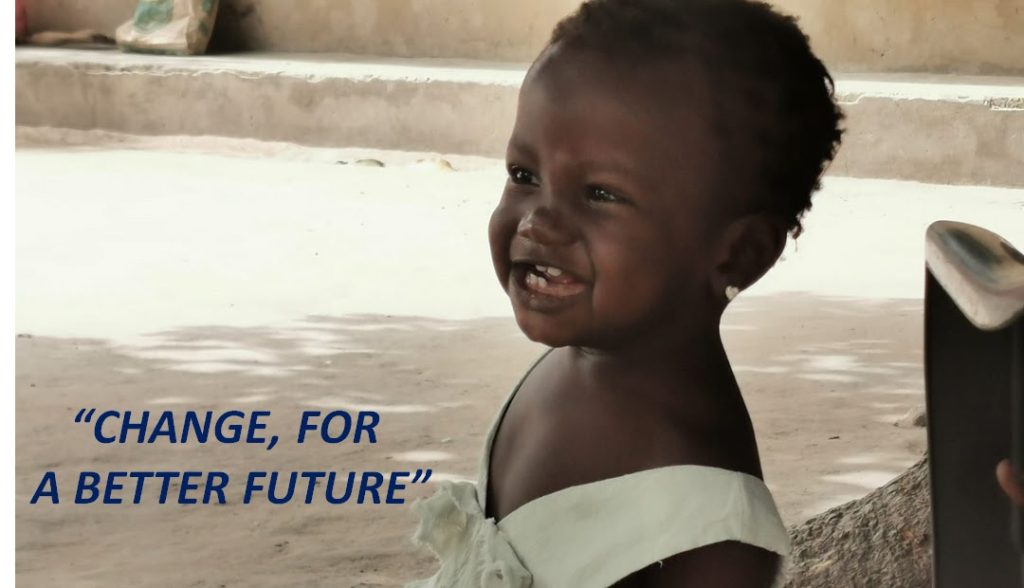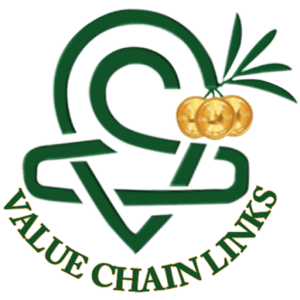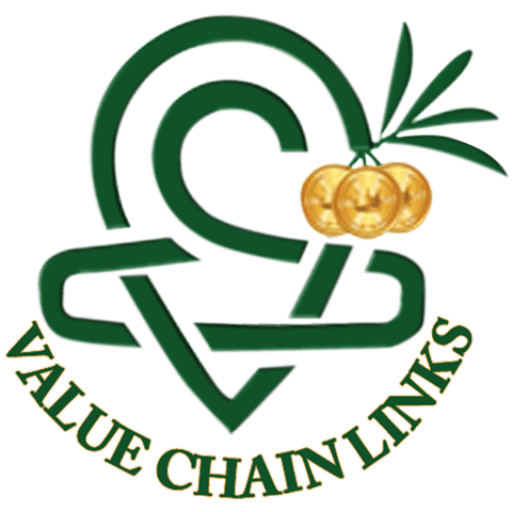WHY ARE BILLIONS OF $ AND DECADES OF INVESTMENTS IN AFRICA NOT BEARING THE “DESIRED FRUITS” AND THE SIMPLE ACTION THAT CAN CHANGE IT?

PART 3 (THE SOLUTION)
BY DR. NIMROD
| Remark, the topic in this article is general and concerns all emerging economies. |
| In Part 1 (link) of this short series, we learned and discussed the agro-industry from the point of view of the VALUE CHAIN partners other than the farmers. In Part 2 (link), we took the FARMERS’ point of view. Finally, in Part 3, we will present the MARKET point of view with a business-oriented solution. PART 3There are no Bad Guys in this story, only many inadequate or unsuitable business models, unfit for the task of transferring emerging economies, including much of Africa, from the “old” Agriculture into the advanced, business-oriented, Agro-industry.The results of the many years of using unfit-bad business models are devastating and depressing to all involved, but mainly to the self-image and livelihood of the farmers and their families in those economies.Once I was blessed with the insight; that the problem is the business model,I focused my efforts on fixing this fundamental and critical flaw by developing an appropriate one.For over a decade and more intensively in the past six years, since I began working in India and Africa, I am trying to “decode” the characteristics of the desired business model for the agro-sector in emerging economies.After much effort, the Green Valley business model is the outcome of these efforts. It reflects my experience and insights on this sector and is designed to convert farmers’ and stakeholders’ ambitions into a proven working reality.I hope you will find the Green Valley business model exciting and maybe helpful because one thing is for sure, many farmers desperately need a more suitable business model to support their transition into the 21st Century.I am eager to hear your opinions, objections, thoughts on issues that the model addresses or that are missing or not appropriately addressed, suggestions for improvement, and any further comments or references. |

| FINANCINGTo increase farmers’ income, we need a mechanism to do that. There are three ways to finance the professional and economic development of farmers in Africa and emerging economies –1. Self-financing (regular) – by the farmer and his government.2. “Easy money” – loans, donations, funds, etc.3. Business-oriented investment – based on specially designed business models. In recent decades, Africa has repeatedly tried to accelerate its economic development through internal efforts to finance and “catapult” its farmers’ economic achievements.Despite billions of dollars in investments streaming to finance Africa’s agriculture, we do not see the expected agro-sector accelerated development and conversion into Agri-(profitable)-business. We can therefore conclude that these approaches and directions have failed, for the most part.Unfortunately, companies and the private sector as a whole have kept away from investing in Africa’s agriculture because of many reasons, but first and foremost, because of the lack of an adequate and successful (promising) business model and the way it can generate profit from such activities.In general, the private sector views Africa’s agro-sector as a high-risk and less of a business opportunity, and hence, in most cases, kept away from it. |
 A comment on Part 2 – from LinkedIn. A comment on Part 2 – from LinkedIn. |
| THE MANGO MODELGreen Valley model is not limited to the mango industry, but we choose to begin with the mango industry due to its unique value and market value potential characteristics.From the point of view of the African mango grower and industry, each of the following is negative and currently viewed as an “impossible challenge” or “pain”–* Reducing fruit fly infestation from 50% – 80% to less than 1%.* Harvesting the mangoes when perfectly ripe for best taste, color, size, and experience in the premium export markets.* Extending the mango export campaign by an additional 2 to 4 months, and even year-round, regardless of the rainy season.* Increasing the yield per hectare from an average5 tons/ha to 30 to 60 tons/ha.* Reaching premium export markets without phytosanitary limitations. The fact that hundreds of thousands of hectares of mangoes in Africa means that you can produce mangoes for low cost and then market them for a premium price in the developed markets.It further means that you can source mangoes from different countries around Africa throughout most of the year.The Green Valley business model presents a way to advance and develop the African agro-industry while posing a business opportunity to investors and marketers ready to seize this unique business opportunity with its remarkable, social, environmental, and humanitarian global impact.Business aside, over 50% of Africa’s population depends on agriculture for their livelihood. Therefore, it is a top global mission to support as much as we can the African farmers in their transition from agriculture to agro-industry until fully integrated into the 21st Century economy. |
 A comment on Part 2 – from LinkedIn. A comment on Part 2 – from LinkedIn. |
| WHAT “ANCHORS” FARMERS TO POVERTY?The Green Valley business model is designed based on the fact that we want farmers to do better economically and become economically resilient. We wish to pull them out of poverty and significantly improve their life standard and quality. To this end, we need to -(1) look at the world through the farmer’s eyes, and(2) keep a strict business-oriented realistic approach.When you do that, you find some shocking truth, sometimes counterintuitive. For example, we found out that when we gave farmers the FreeDome units for free (for the control of fruit flies) as part of projects, they often doubled their income. Yes, double their income.It may sound good because not many manage to achieve it, but I thought it is terrible.Why?Because their income per hectare before the project was meager. Then, doubling the revenue changed from “very low” to “less low.” Unfortunately, that shift alone is insufficient to take them into the “prosperity” zone.Why?Because, without access to the export-premium markets, their livelihood remains constrained by the low prices of the local markets, their income per kg remained low, and their yield is now uninfected but still low.Hence, although they were happy with improving their financial results, their overall state remained unchanged.You may ask, “If doubling farmers’ income is insufficient, then what can we do to increase their income further and hence bring a sustainable economic change to their lives?”To further increase farmers income, we need to overcome the limitations mentioned above:(1) Enable farmers’ easy access to the premium export markets, where they can fetch better prices per kg.(2) Increase farmers’ yield per hectare. No matter how much subsidies and financial support farmers get (note Part 2), they will remain poor. This is because, unless farmers get access to PREMIUM MARKETS, where consumers are ready to pay a premium price, they can sell SUBSTANTIAL high-quality QUANTITIES, meaning their yield per hectare is high. WALK THE TALK: FROM THEORY TO PRACTICEGreen Valley has set itself to encourage farmers in emerging markets to market their produce for export.How do we do it?We enable farmers to access export markets easily. We do it by providing mango growers with a complete solution to the number one export-inhibitor and phytosanitary risk, which are – fruit flies, and then give them access to the appropriate value chain, which will enable a convenient process to export their produce.A unique part of the Green Valley business model provides mango growers the Fruit Fly Certified Trade Zone (FFCTZ) protocol. This protocol includes the products, FreeDome, and services – FREE OF CHARGE, in exchange for the farmer’s commitment to market his produce through the Green Valley value chain.Using the FFCTZ, equipped with FreeDome, we decrease fruit fly infestation to a level lower than 1%, which has a massive impact on the produce quality and the ability to export it to premium markets. Furthermore, it dramatically impacts the potential marketable quantity.When we apply the FFCTZ in places where fruit fly infestation is 50% to 80%, we immediately increase the available marketable produce that farmers can sell. Then the value chain can export to a 200% to 400% greater volume (in weight).Green Valley’s business model has additional ways of supporting farmers to improve their produce quality and quantity, such as tree training, irrigation, and other elements, which we will discuss in some other time.You may ask yourself, “How do Green Valley finance itself and the entire operation?”We can finance everything because we significantly increase the volume of the high-quality fruits exported. Hence, we can charge the exporter/importer for a portion of the income we help generate for them.This way, the market, meaning the consumers, is financing the program. Hence, the “market” feedback is immediate, and if consumers like “the offer,” they will buy more, and the farmers and the value chain will enjoy positive feedback. But, on the other hand, while if consumers don’t prefer “the offer,” they will not buy or buy less, and the farmers and the value chain will suffer a negative-feedback and low income.This real-market feedback is often missing in current projects, which are finance by non-business-oriented organizations.Without increased trust within the value chain, we will continue seeing farmers growing produce with low demand or sold at a loss price. |
 A comment on Part 2 – from LinkedIn. A comment on Part 2 – from LinkedIn. |
| EXPORT & BUSINESS GAPGreen Valley‘s business model offers all types of investors (i.e., farmers, governmental, global, the private sector, and others) a sustainable way to finance the continuous development of the agro-sector, based on sound and solid business steps and principles.The aim is to establish the business development of African agriculture, based on a massive export of high added value quality agricultural produce to the premium markets.This required improving and tightening commercial agreements between countries and commercial entities in developing and developed markets.The Green Valley business model profitability is guaranteed thanks to the large gap between the cost of production in the emerging markets and the selling price in the premium markets.Hence, the ones who “practically fund” the program are therefore the consumers in the premium markets, and they do it by purchasing produce grown and marketed by Green Valley farmers and the value chain.The value of the financial gap between the cost of production in the country of origin and the selling price in the premium market generates and motivates the business parties to participate in this model.When the business gap is large enough, and the private sector sees its opportunities far exceeding its risks, this is when it will be ready to finance “agriculture development programs.”Green Valley sees this huge business gap/opportunity. Hence, it is gladly ready to invest in giving away products, and transfer knowledge, services, etc., free of charge or at low cost to its business partners in the emerging economies. THE CHINESE ECONOMIC BOOMAn excellent example of such a business attitude is the rapid development of China’s economy.China’s rapid industrialization and economic development are based on the fact that big corporation wanted to get low-cost production – therefore had to transfer technologies and knowledge from developed markets.Those technologies and knowledge are often received free or at a low cost from Western leading business entities that guarantee the Chinese manufacturer’s purchase of his production at a pre-agreed price.The low cost of Chinese labor and taxation enables the private sector in the premium markets to buy the end product for a low price in China and sell it for a much higher price and a considerable profit with big margins in its own market. This, in return, financed the cost of the technology and know-how given to the Chinese producer.This way, the Chinese industry grew fast, giving birth to many Chinese millionaires and billionaires. The foreign business partners were growing their business rapidly, and consumers enjoyed an abundance of products at a worthwhile price.From China’s industry perspective, it –1. Got access and received technologies and knowledge from the leading companies globally (for example, Apple, Nike), sometimes even without paying for it.2. Demand low-cost production and Promise access of products/produce to premium markets.3. Created an engine for continuous development and long-term commitment of traders and buyers. When you think of it, you find that most, if not all, of countries that managed to escape poverty and create economic prosperity in the past 50 years have used that sort of model. But, unfortunately, this model was never adjusted to the agro-industry.Green Valley views such an operation model as the right one for the agro-sector in the emerging markets, with the apparent need for adjustments.Just as China’s economic development is sustainable, the Green Valley business model for the agro-sector is long-term and enables sustainable professional and economic growth even for farmers in poverty. THE INVESTORS’ BUSINESS GAPIn African agriculture, we can indicate quite a few stakeholders who can be ready to participate with Green Valley in investing in this sector under a more suitable model.That includes, among others, the “traditional” parties as listed above – farmers and their government, value chain business partners, foreign governments, and global organizations.As said above, the business gap, and therefore the business opportunities, is equal to the differences in labor cost, plus production and taxes, between Africa and the target premium markets.Another way of measuring the business gap is by measuring “productivity” and income per capita. For example, comparing the current income of the African mango grower often range from 200€ to 2,000€ per hectare to that of an advanced mango grower, which varies from 30,000€ to 60,000€ per hectare.This is a 50,000€ per hectare business gap! When we multiply it by the millions of hectares of mangoes across Africa, Asia, you end up with a multi-billion industry that is now underperforming. Therefore, it can be seen as an attractive field for investors.This gap is even though the climate and environmental conditions of growing mangoes in Africa are often far more favorable than those prevailing in other regions from where mangoes are currently sourced to the premium markets. |
 Prospect business development for mango growers, who are currently practicing “agriculture” with low income, to the point where they practice “agro-industry” and increase their income, i.e., to 30,000€ per hectare, and more.Practical application of the Fruit Fly Certified Trade Zone protocol (FFCTZ) is the Key Success Factor (KSF) for the entire revolution in the mango industry. Financial analysis is based on the marketing of 2.5 tons/hectare at the starting point. Prospect business development for mango growers, who are currently practicing “agriculture” with low income, to the point where they practice “agro-industry” and increase their income, i.e., to 30,000€ per hectare, and more.Practical application of the Fruit Fly Certified Trade Zone protocol (FFCTZ) is the Key Success Factor (KSF) for the entire revolution in the mango industry. Financial analysis is based on the marketing of 2.5 tons/hectare at the starting point. |
| From a historical-economic point of view, the 50,000 €/Ha gap represents the gap between farmers who practice “Agriculture” to those who practice “Agro-industry” business.Investors are almost always industry-oriented, basing their business activities on ROI, value, and time. Green Valley’s business model presents a similar approach so that investors can get a rapid and high ROI.Not surprisingly, investors and entrepreneurs are always looking for such “gaps in the market” because this is where high-value ROI business opportunities lay, if and when you can bring a solution to “a pain.”Green Valley is designed to support the rapid yet sustainable transition from Agriculture, a 12,000 years old revolution, to Agro-industry, which is 200 years old revolution, and from there to agro-business, which is the current direction.When we convert a field into “industrial,” any field, we open new business opportunities, and we create many profitable jobs. |
| TAKEAWAYS» “NEW DEAL” – current business models are inappropriate for the agro-industry.» PRINCIPLES of the “New Deal’s” business model –(1) GOAL – doubling the income of the poor farmers (i.e., currently 1$ to 3$ income per day) every 2-3 years until economic independence is achieved or income per day is over 19$.(2) MEANS – A business model which encouraging a long-term business bond between farmers and the business community in emerging economies and the private sector in developed markets.(3) ADDITIONAL PARTNERS – Governments, not-for-profit investors, and other business-oriented entities can and should (!) participate in this effort. |
| Please, if you found value in this article, it would mean a lot to me if you send me a comment and share it with your friends.Subscribe here for access to exclusive content |

